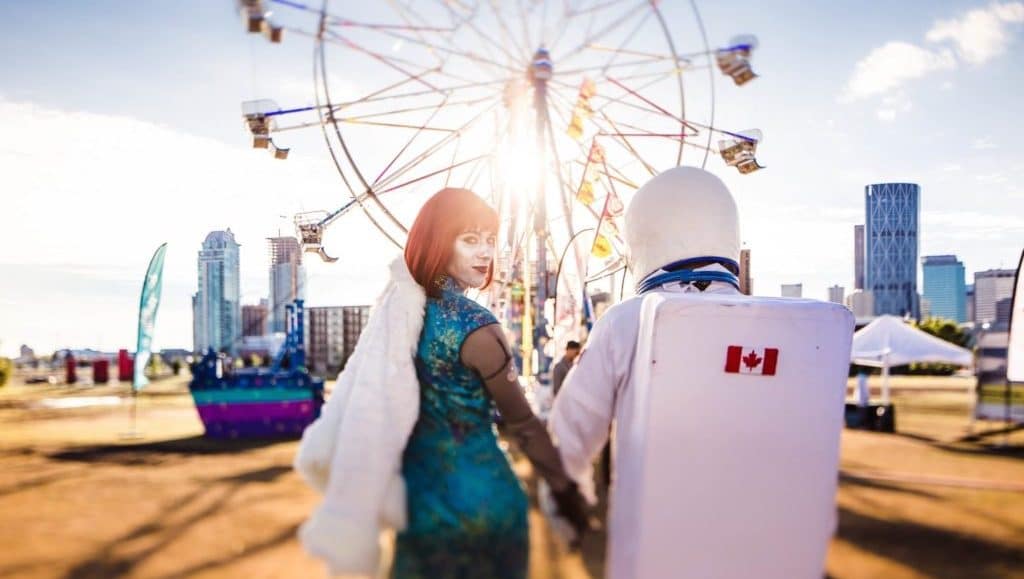 Did you hear the one about the hot tub, the actor and the quantum physicist? How about the one with the inflatable octopus, the trash robot and the fire-breathing serpent mother?
Did you hear the one about the hot tub, the actor and the quantum physicist? How about the one with the inflatable octopus, the trash robot and the fire-breathing serpent mother?
No joke, for all of the above, you just need enter the curious world of Beakerhead – a place where arts, engineering and science gets smashed up into a trippy, educational marvel. Imagine meeting the coolest science teacher in the world at Burning Man.
It’s in the freely shared ideas that collisions, oddities and thrills emerge.
On a mission to “make science fun again”, science broadcaster Jay Ingram and journalist and award-winning designer Mary Anne Moser founded Beakerhead in 2013 – when they realised that there were many people like them who had been ‘streamed’ into either sciences or the arts, but loved both worlds. Today the year-long programme with workshops, build days, school and apprenticeship programmes, culminates in an annual five-day spectacle every September in downtown Calgary, Canada. And spectacular just about describes it.
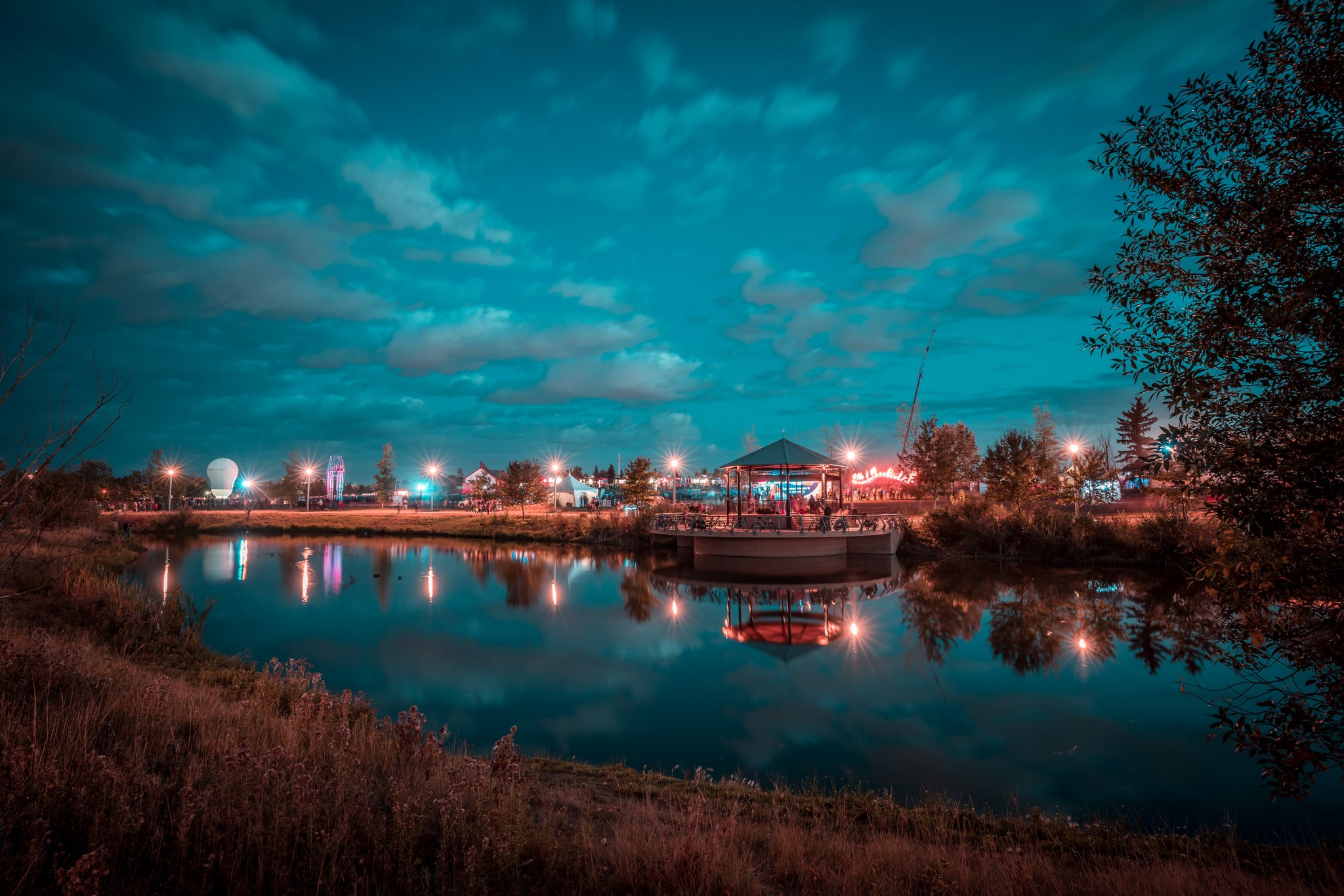
Beakernight | Photo: Trevor Lalonde
The first year featured a special appearance from Canadian astronaut Chris Hadfield, who sang David Bowie’s ‘Space Oddity’ on the space station, and Daniel J Levitin, who wrote This Is Your Brain On Music. This year UK physicist Jocelyn Bell Burnell will be there. She discovered the radio pulsars back in 1967 (no biggie) and is famous for not winning the Nobel Prize.
Mary Anne and Jay want to create a ripple effect – by attracting the attention of people who might not otherwise be interested in the crossroads where art, science and engineering intersect. And they see it as a collaborative effort.
The partners (in work and love) have have created a passionate brainstorming programming team called the ‘Creative Council’ to get together for “exuberant expressions of ingenuity”. It’s in the freely shared ideas that collisions, oddities and thrills emerge. Mary Anne explains that there are certain rules: “You leave your ego at the door and ideas are generated in the middle of the table so that we can all dive in to upgrade them.”
”The power of the collective also comes from the diversity of cultures, backgrounds and gender, and also the willingness of its members to be open-minded about even uncomfortable ideas,” adds ex-Discovery Channel host Jay. “The core group is always generating ideas, but it works best when everyone has a say in how, or even whether, that idea is developed.”
More energetic than a particle accelerator, we spoke to Mary Anne about bamboozlement, creativity, magic and curiosity. Read on to find out the reason why Beakerhead is so “delightful”. (We also asked Mary Anne about her favourite collaborators. Meet the Beakerhead collective here.)
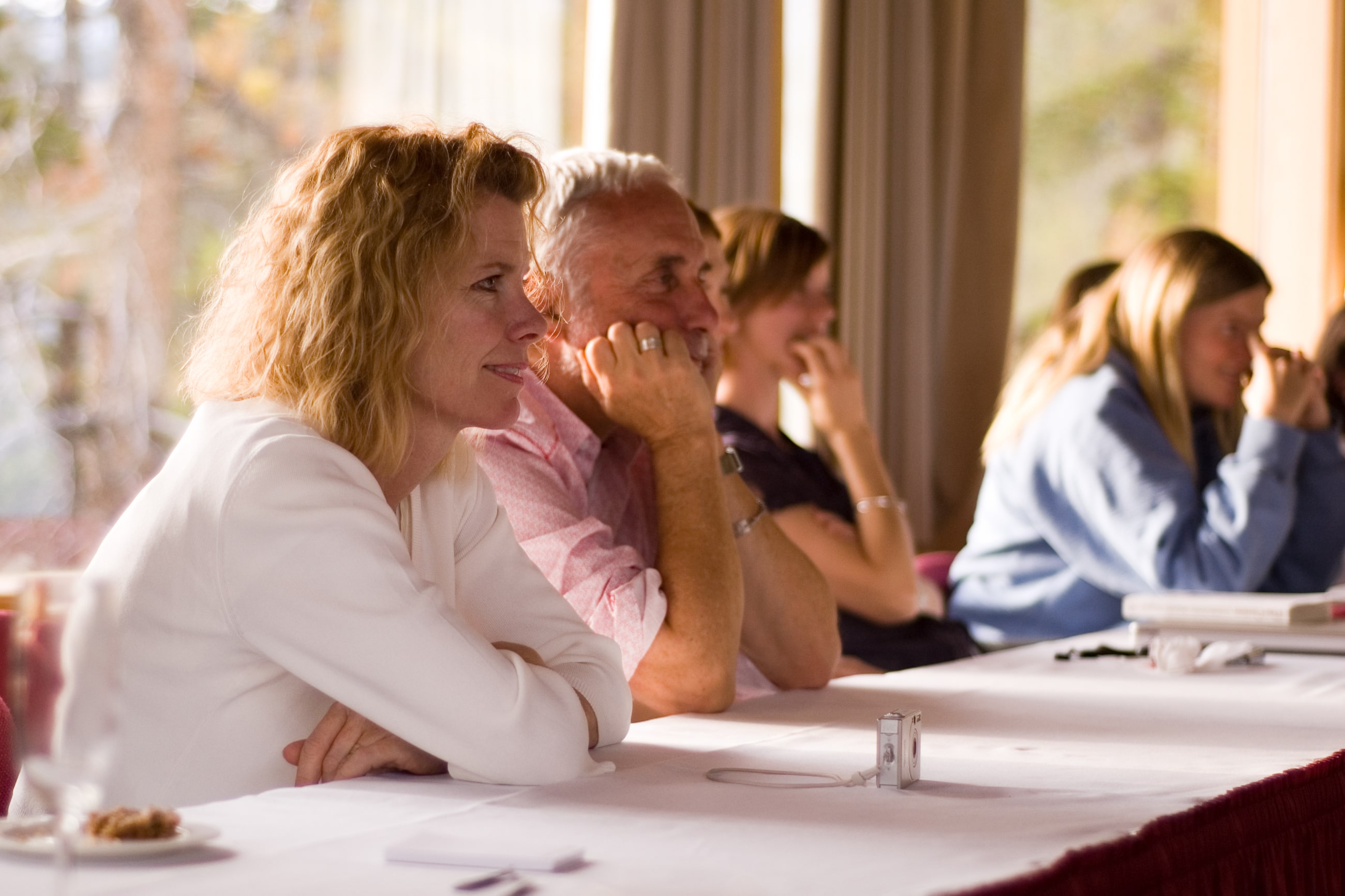
There’s something curious about Mary Anne and Jay
Mary Anne Moser:
The name ‘Beakerhead’ feels welcoming. I remember the exact moment when it came to mind, while we were in our office at home. It encapsulated the fun and approachability we wanted, and also says ‘science’. It speaks to people in some way that is a little bit tricky to articulate. Maybe it’s preschool curiosity?
In the first few years people said, “Where do you get these ideas? Did you bring this in from New York?” They didn’t think it could be born in Calgary. But we are not trapped here! We have an international airport and have travelled around the world, you know?
Imagine a 40-feet high octopus breathing fire out of eight tentacles… but on closer inspection it’s made from baking sheets and muffin tins. There is a charm about things being made from everyday things.
The most memorable things have failed – which is funny. We get permission to keep trying new projects that are kind of wacky and delightful and sciencey and artsy.
‘Hot Tub Time Machine’ is the funniest installation we have ever done. In Calgary the Olympics were held in 1988. People are still excited and have paraphernalia, so we put a hot tub on the main pedestrian mall of Calgary and filled it with hot water, an actor, a scientist and a quantum physicist.
You would be amazed by how people thrive in science and engineering who did not have good marks in science and math in school. Those marks should not be the judge of whether or not you pursue a career in that area.
People are genuinely curious why physicists think there are parallel universes. The idea was the actor really wanted to time travel to 1988 and the physicist was sitting on the edge of the hot tub in his amazing suit to help explain what would be required. He was so deadpan, it was hilarious. People were completely bamboozled, but I loved that one.
We created a mid-air restaurant, The Periodic Table. People were served a course as a bio-fuelled Ferris wheel stopped. We had a chemistry lounge, for ‘good’ cocktails. Unfortunately it snowed! It was cold up there, we ran up with towels and Ikea blankets to make people as warm as possible. It sold out and people remembered it.

Eating The Periodic Table: molecules, atoms and just plain fun
Culture and creativity are like plasma for the cells. They’re the connecting fluid that makes the many parts work together. We are a social organism – us humans – and we have to work on the culture and creativity that connects us in order to keep it healthy.
Why do you never hear about the magic and curiosity and all the coolest things about science? You just hear about the breakthroughs. Science and engineering is the most fascinating story on earth in the hands of the right storyteller.
Storytelling means connecting emotionally with the viewer, whether that is one or a million viewers. The conversation starts with a question really, “why is this interesting to you?” Now we have got your attention, “what is it that you are thinking about?”
We are relentlessly audience-focused. We are always thinking, “why would this be delightful, could this really catch on, is this shareable, are people really going to go crazy over it?” Some of the things that we are not sure people will like end up having a two-hour line up for the whole duration of the event.
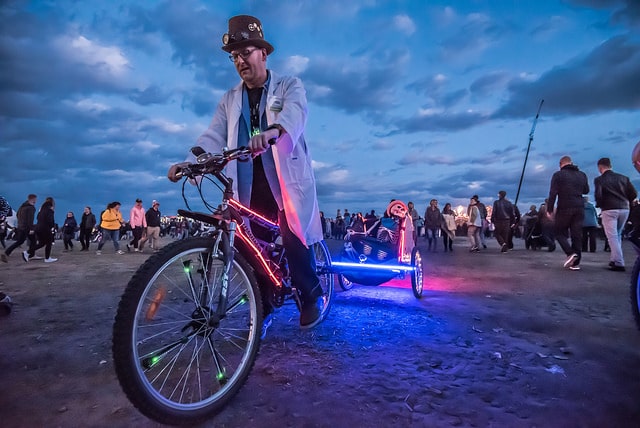
Beakernight | Photo: Gilles Thibault
Our business is probably the un-smartest sequence model in the whole wide world! We want to reach people who would not buy a ticket. It’s part of our Band-Aid – to bring people into the fold who do not have an affinity for science.
There are three criteria for jumping on our platform. You have to be passionate about sharing science, willing to put the audience first and be creative about how you are engaging them. People are invited and there are lots of ways you can get involved, from low professional ways like volunteering to highly intense ways, like being a crew in charge or programming or safety. It’s pretty simple and there is a huge network.
It’s quite a hum of people! There have been more than 1,000 presenters from all parts of the art, science and engineering spectrum since we started, and the volunteer database is 1,000-strong. Add to that the hundreds of thousands who have attended and the millions reached through social media.
As an introvert, I get the most joy out of editing and designing… basically the behind-the-scenes marketing role. I love being in those weeds, having a pencil behind my ear and doing work in the background. I am very good at surrounding myself with people who are more comfortable on stage, like Jay.
I first met Jay a million years ago when I was doing my Master in scientific uncertainty in the media at the University of Calgary. I knew him from his broadcasting and radio work. (He doesn’t love this story!) He was saying that scientific uncertainty, which I am enamoured with because of that discovery process and curiosity, does not play all that well in the media. I did not put that in my thesis!
Fast forward to decades later that our paths crossed again when I was setting up the Banff Centre Science Communication Programme. I invited Jay and a dozen other leaders to see if there was an appetite to teach bscience communication to scientists. We realised that we should walk the talk, helping people engage mainstream audiences in science.
We want to help students and adults alike reach their full potential and, in the process, make the world safer. Now we are very active on developing more of a year-round presence and a business to sustain it all. If we can find commercial transaction in that space – that is rewarding and not exploitative – then we will be sustainable and can continue to ever-widen the circle.
We are the perfect balance. Jay and I have done a lot of things together and we have got a lot off the ground. As a couple, ours is one of those partnerships where our skills are perfectly complementary. I am an organiser and Jay has got great people instincts, so much experience in front of the camera, in the media.
Jay is one of the most important – and most enthusiastic – faces of Beakerhead. Every time we run a workshop or meet a team he says that is the best we have ever worked with. He means it, which I find funny. He has got a genuine interest in what people are trying to do and that permeates the culture of the organisation, and people pick that up and that is not put on.
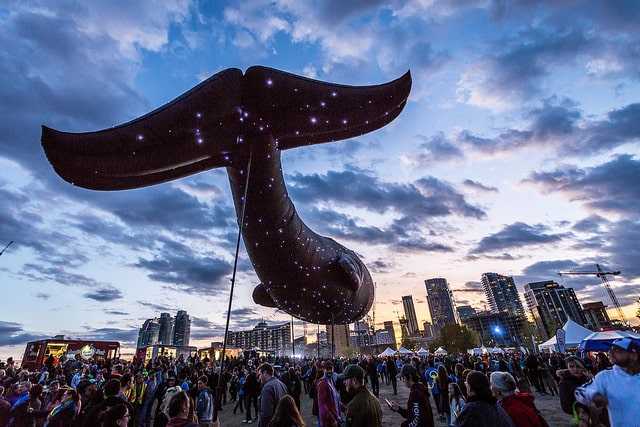
Beakernight | Photo: David Kotsibie
When I was little my best friend was really into the outdoors. She had a microscope and a dissecting tray. To be able to dissect a worm or go and find the milk pods and milk weed in nature on the weekends (not in school where it was more tedious) outside was fascinating. She barely graduated from high school, yet taught me all about the natural world. My fascination with biology and zoology and huge appreciation for the arts is hugely influenced by her.
There is something in the school system that does not match up with the different ways kids learn. The Beakerhead Education Programme runs all year round. We focus on helping teachers. We try to give them some tools, projects, ideas or inspiration for competency-based learning as opposed to curriculum-based learning. They do tend to be projects that will catch the interest of those interested in making or creativity rather than academic performance. Making it this way means we can reach more students and it does not exclude anyone.a
We are aggressively inclusive. We are really trying to make sure that money is never a barrier. So it is always one of the tensions, how do you stay sustainable and keep it free? Those two things are incompatible so parts of it have to be free. It’s remarkable to me how much genuine interest there is in reaching across social and cultural differences once people feel that the environment is safe for it, that there is trust.

Beakernight | Photo: Trevor Lalonde
The arts have always been seen as ‘easy’ compared to the sciences. Where did that idea come from? In the art world, people often say that math is hard. We want to create a more level playing field and appreciation through better connections between these worlds.
There is a natural human tendency to surround ourselves with people much like ourselves. We amplify this sameness in schools and workplaces by streaming people into specialties. Somewhere along the way, this starts to lead to social friction. And that’s where problems begin. But it doesn’t have to be this way. The research is in on this!
There are heaps of advantages to increasing trust between diverse people. It creates warm and inclusive neighbourhoods, it replaces fighting with peace and potential. And, very importantly, it is directly connected to strong companies and thriving economies. So, we need to invest time and money in counterbalancing the natural clumping of people into silos of similarity.
My triplets are probably the reason that Beakerhead is so delightful. I did have my kids in mind.
My FuturePower would be to always be able to delight – and to always know what that would look like.
AtlasAction ► Beakerhead are looking for presenters and volunteers all the time. Build, create, collaborate: there are ways to get involved on beakerhead.com.
The Beakerhead collective ► As part of CultureFutures, we asked Mary Anne about her favourite collaborators and then interviewed them too. Enter the magical, curious world of Beakerhead.
